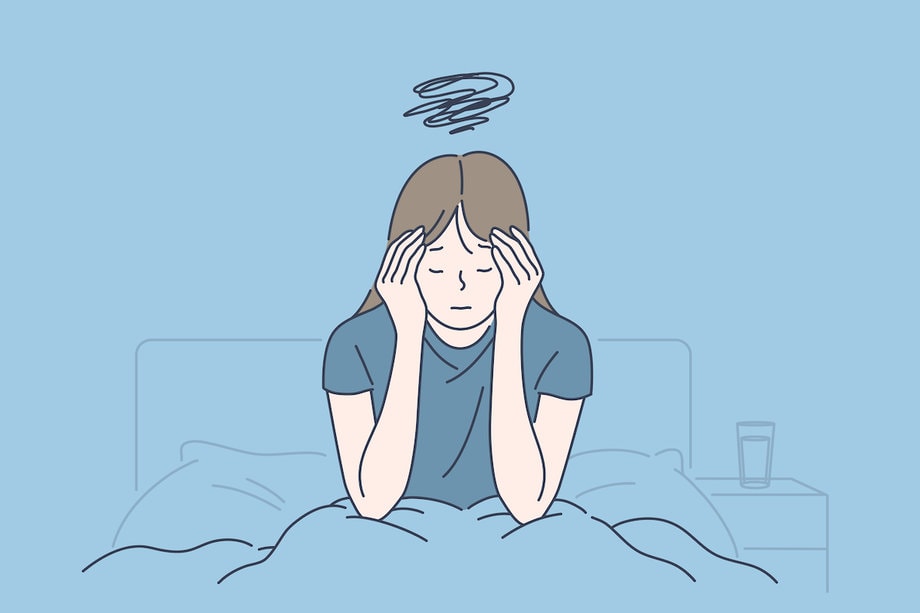Why Pacing Activities Is Important for Pain Control

This article aims to explore the importance of pacing activities for pain control.
It will examine the benefits of activity pacing for pain management, highlighting the connection between activity levels and pain.
Additionally, strategies for effective activity pacing to reduce pain will be discussed.
The article will also discuss how pacing activities can improve the quality of life for pain patients, as well as the role of pacing in preventing pain flares and exacerbations.
Furthermore, pacing techniques for long-term pain control and management will be addressed.
Key Takeaways
- Pacing activities helps manage pain levels effectively.
- Balancing activity and rest prevents overexertion and pain flare-ups.
- Implementing a structured approach to activity management enhances well-being.
- Pacing techniques improve overall satisfaction and quality of life for pain patients.
The Benefits of Pacing Activities for Pain Management
Pacing activities has been shown to offer benefits in pain management.
Activity pacing refers to the process of breaking down tasks or activities into manageable parts, and incorporating regular rest periods to prevent overexertion. This approach allows individuals to engage in activities while managing their pain levels effectively.
By pacing activities, individuals can avoid pushing themselves too hard, which can lead to increased pain and potential exacerbation of their condition.
Furthermore, activity pacing helps individuals maintain a more consistent level of activity, preventing periods of prolonged inactivity that can contribute to muscle stiffness and further pain.
Overall, incorporating activity pacing techniques into pain management strategies can help individuals maintain a balance between activity and rest, improving their overall quality of life and reducing the impact of pain on daily functioning.
Understanding the Connection Between Activity Levels and Pain
This discussion aims to explore the correlation between activity levels and pain and highlight the benefits of pacing activities for pain management. Understanding this connection is crucial in developing effective pain management strategies.
Activity and Pain Correlation
The correlation between activity and pain levels has been extensively studied in the context of pain control. Activity management plays a crucial role in pain management, as it helps individuals understand the impact of different activities on their pain levels and allows them to pace their activities accordingly. Pacing refers to the process of balancing activity and rest to prevent overexertion and minimize pain flare-ups. It involves breaking tasks into smaller, manageable parts and incorporating regular rest periods. By pacing activities, individuals can avoid pushing themselves beyond their limits and reduce the risk of exacerbating their pain. This approach allows for better pain control and improved overall functioning. The table below illustrates the key concepts related to activity management and its impact on pain control:
| Key Concepts | Description |
|---|---|
| Activity Management | The process of balancing activity and rest to prevent overexertion and minimize pain flare-ups. |
| Pacing | Breaking tasks into smaller, manageable parts and incorporating regular rest periods. |
| Pain Control | The ability to manage and reduce pain levels through various strategies, including activity management. |
Benefits of Pacing
One benefit of effectively managing activity levels in the context of pain control is the reduction of pain flare-ups and the prevention of overexertion.
Pacing activities allows individuals to find a balance between rest and activity, which can help in managing chronic pain. By breaking tasks into smaller, manageable parts, individuals can avoid pushing themselves to the point of exacerbating their pain.
This technique also enables individuals to distribute their energy throughout the day, preventing them from becoming fatigued and reducing the likelihood of pain flare-ups. Additionally, pacing activities can help individuals maintain a consistent level of functionality, as it allows them to engage in activities without causing excessive strain on their bodies.
Overall, pacing activities is an effective pain management technique that provides several benefits, including pain reduction, prevention of overexertion, and maintaining functionality.
Strategies for Effective Activity Pacing to Reduce Pain
This discussion focuses on the benefits of pacing, tips for effective pacing, and the management of pain through pacing.
Pacing, as a strategy, allows individuals to balance their activity levels in order to prevent overexertion and minimize pain. By pacing their activities, individuals can experience improved physical functioning, increased endurance, and a reduction in pain levels.
Moreover, effective pacing techniques involve setting realistic goals, prioritizing activities, and incorporating regular rest breaks, which can contribute to better pain management and overall well-being.
Benefits of Pacing
Pacing activities has been observed to offer several advantages in managing pain. It is particularly important for individuals experiencing chronic pain, as it helps in maintaining a balance between activity and rest, preventing exacerbation of symptoms.
Activity pacing is a strategy that involves breaking tasks into manageable segments and alternating them with periods of rest. By doing so, individuals can prevent overexertion and avoid pushing themselves beyond their limits, which can lead to increased pain and fatigue.
Pacing activities also allows individuals to gradually increase their activity levels over time, improving their overall physical function and quality of life. Additionally, it promotes a sense of control over pain, as individuals are able to engage in activities without fear of worsening their symptoms.
Tips for Pacing
A key strategy in managing chronic pain is the careful allocation of energy and effort throughout the day. This involves breaking tasks into manageable segments and alternating them with periods of rest.
Pacing techniques are essential in managing energy levels and preventing pain exacerbation. One effective technique is activity pacing. This involves balancing activity and rest to avoid overexertion. It can be achieved by setting realistic goals, prioritizing tasks, and taking regular breaks.
Another technique is energy conservation. This focuses on optimizing energy use by using assistive devices or modifying tasks to reduce physical strain.
Additionally, time-based pacing involves planning and scheduling activities based on energy levels and pain patterns.
Managing Pain With Pacing
The careful allocation of energy and effort throughout the day is crucial in effectively managing chronic pain. Pacing, or the practice of balancing activities and rest, is a key strategy in pain control. By breaking tasks into smaller, more manageable parts and taking regular breaks, individuals can prevent overexertion and minimize the risk of exacerbating their pain. Pacing also helps to conserve energy and prevent fatigue, which can worsen pain symptoms. To effectively manage pain through pacing, it is important to establish a routine and prioritize activities based on their importance and impact on pain levels. The table below provides an example of how one might structure their day using pacing techniques.
| Time | Activity |
|---|---|
| 8:00 AM | Light exercise |
| 9:00 AM | Work |
| 10:30 AM | Break |
| 11:00 AM | Work |
| 12:30 PM | Lunch |
How Pacing Activities Can Improve Quality of Life for Pain Patients
Implementing a structured approach to activity management can enhance the well-being and overall satisfaction of individuals living with chronic pain. Pacing activities is an important aspect of this approach as it focuses on improving function and preventing pain flares.
Pacing involves breaking down tasks into manageable segments and incorporating regular rest breaks to prevent overexertion and exacerbation of pain. By pacing activities, individuals with chronic pain can gradually increase their activity levels without overwhelming their bodies. This approach helps to conserve energy, manage symptoms, and prevent the onset of pain flares.
Pacing activities also allows individuals to engage in meaningful activities while minimizing the risk of worsening their pain. Overall, incorporating pacing into activity management strategies can significantly improve the quality of life for individuals living with chronic pain.
The Role of Pacing in Preventing Pain Flares and Exacerbations
Breaking down tasks into manageable segments and incorporating regular rest breaks can help individuals with chronic pain gradually increase their activity levels without overwhelming their bodies. This pacing technique is crucial in preventing pain flares and exacerbations.
By pacing activities, individuals can optimize pain management techniques and reduce the risk of overexertion. Pacing allows for a balance between activity and rest, ensuring that individuals do not push themselves beyond their limits and trigger a pain flare.
By breaking tasks into smaller components and taking breaks as needed, individuals can conserve energy and prevent the accumulation of excessive physical stress. This approach also promotes self-awareness and allows individuals to better understand their pain thresholds, enabling them to make informed decisions regarding their activity levels.
Overall, incorporating pacing techniques into daily routines can be an effective strategy for preventing pain flares and promoting better pain management.
Pacing Techniques for Long-term Pain Control and Management
Incorporating strategies that involve dividing tasks into smaller components and incorporating regular periods of rest can be beneficial for individuals with chronic pain in managing their condition and optimizing their daily routines.
Pacing techniques for long-term pain management aim to balance activity and rest, preventing pain flares and exacerbations. These techniques encourage individuals to listen to their bodies and adjust their activities accordingly.
By breaking tasks into smaller, more manageable components, individuals can distribute their energy throughout the day, avoiding overexertion and minimizing the risk of pain escalation.
Regular periods of rest allow for recovery and prevent the accumulation of fatigue, which can worsen pain symptoms.
Pacing techniques also promote self-awareness and empowerment, as individuals become more attuned to their pain levels and learn to adapt their activities to maintain a functional and fulfilling lifestyle.
Frequently Asked Questions
How Can Pacing Activities Help Individuals With Chronic Pain Maintain a Consistent Level of Activity Throughout the Day?
Maintaining consistency in activity levels throughout the day can be beneficial for individuals with chronic pain. Pacing activities helps with energy management, allowing for better pain control and improved functioning.
Are There Any Specific Activities That Should Be Avoided or Modified When Practicing Activity Pacing for Pain Control?
Specific activities should be modified or avoided when practicing activity pacing for pain control. Adapting tasks to minimize physical strain, avoiding repetitive movements, and using assistive devices can help individuals manage pain and maintain a consistent level of activity.
Can Pacing Activities Help Reduce the Reliance on Pain Medication for Individuals With Chronic Pain?
Pacing activities can serve as an alternative approach in reducing medication reliance for individuals with chronic pain. It has been suggested that by managing activities and avoiding overexertion, patients may experience improved pain control and decreased need for pain medication.
Are There Any Potential Drawbacks or Challenges Associated With Implementing Activity Pacing as a Pain Management Strategy?
Potential challenges and drawbacks of implementing activity pacing as a pain management strategy include lack of motivation and difficulty establishing a routine. These factors may hinder the successful incorporation of pacing activities for pain control.
How Does Activity Pacing Contribute to the Overall Well-Being and Mental Health of Individuals With Chronic Pain?
Activity pacing contributes to the overall mental well-being and physical limitations of individuals with chronic pain. It helps them manage their pain by finding a balance between rest and activity, thus reducing the negative impact of pain on their daily lives.









